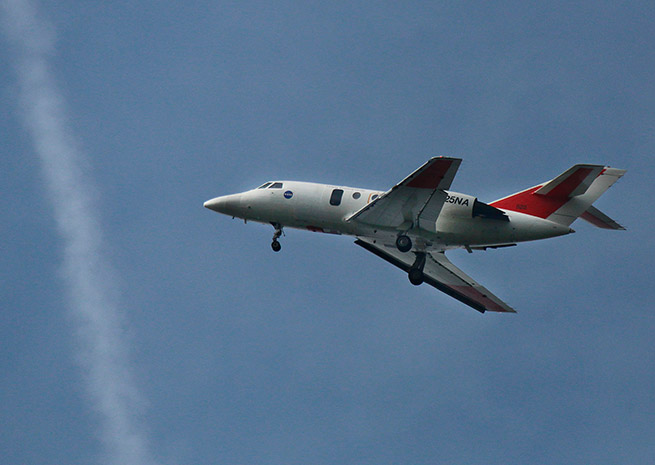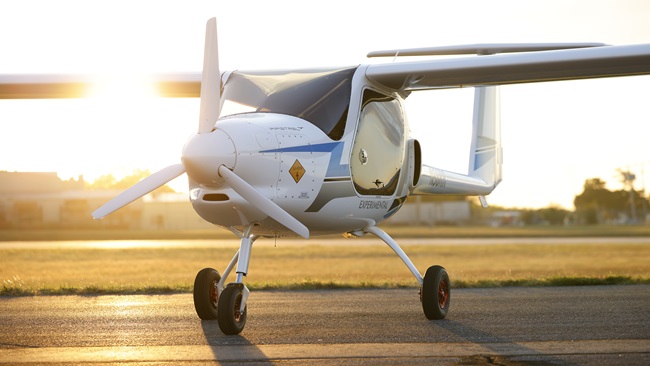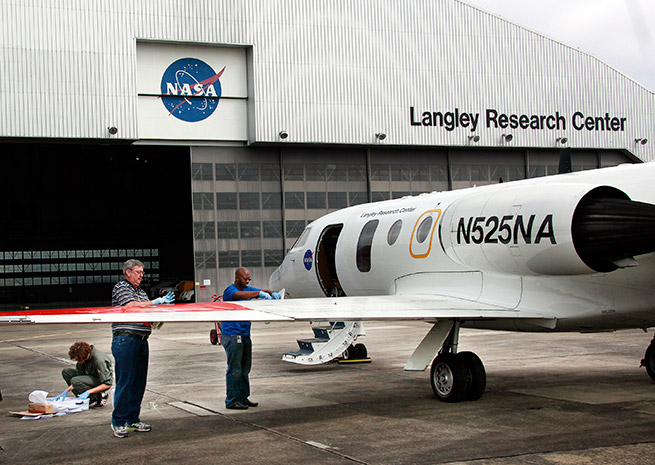
An airplane wing moving at speed through the lower altitudes makes a fine fly swatter, and NASA scientists and engineers are working to make wings of the future better able to hit and run, rather than collect. Accumulation of more than a few tiny bodies can have a significant impact on aerodynamic efficiency, and fuel cost.
Their work may ultimately also help solve a problem that can kill humans: airfoil icing.
There’s another NASA team working on ice contamination, with some members belonging to both teams at NASA's Langley Research Center in Hampton, Va. The effort to reduce wing contamination dates back perhaps 60 years, and NASA is not alone. The agency’s German counterparts flew an Airbus A320 in the past summer on a very similar flight profile: low and slow, aiming for maximum insect contact. Another researcher in Ireland is also working on the problem. The sudden wave of international bug interest is coincidental, according to senior NASA researcher Mia Siochi, who led the NASA team on a quest for a bug-shedding surface coating while the German team sought an aerodynamic solution.
“We found out about each other’s work when we were publishing,” Siochi said.
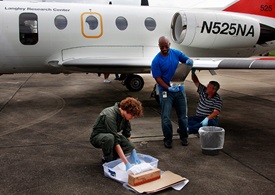
Siochi said the “bug team,” with half a dozen members, is a “fairly small” part of a much larger effort: NASA’s Environmentally Responsible Aviation (ERA) Project, a five-year quest to develop and refine technologies that can make future aviation more efficient. Insects threaten to spoil the benefits of laminar flow, which has been shown to reduce fuel consumption by 5 percent, primarily in the high-altitude cruise portion of the flight. Collecting too many bugs on takeoff and approach, where most bug-aircraft collisions occur, can spoil that laminar flow with turbulent air.
The NASA team has tested more than 100 different compounds and combinations of surface coating, blasting bugs and measuring the residue left behind. Ground tests with the bug gun, and wind tunnel tests winnowed the list of candidates down to those showing the most promise, and test materials were applied to NASA’s HU-25C Falcon jet for flight testing in late summer.
“It’s just an unusual sort of test for a chemist,” Siochi said. “Typically, we stay in the lab.”
Similar to Teflon, the coatings share a key property: low surface energy. To put it in layman’s terms, they seek a slippery surface that can hold up under aircraft operation cycles. “Our target is to get at least a 50-percent reduction in residues of insects.”
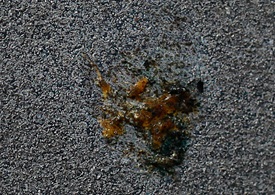
A few promising contenders have emerged, and NASA continues to test additional products, including Ultra Ever-Dry, a product that AOPA Pilot Senior Editor Dave Hirschman blogged about in February, noting it might have potential to reduce ice contamination as well as insects.
Siochi said that particular compound was tested in a Langley wind tunnel a few days ago, and while the results are not yet in, compounds of this type have not yet proved to have staying power on an airplane wing.
“The one concern we have with that type of coating is the durability,” Siochi said. Such a hydrophobic coating may still be practical, even if it must be regularly reapplied, if the cost is less than the cost of fuel burned due to bug contamination. “We’ll probably know more about those results in the next few weeks.”
Shedding bugs and ice both pose unique challenges. Researchers at the Massachusetts Institute of Technology and General Electric reported in 2010 that super-hydrophobic surfaces do not prevent accumulation of frost, though the basic strategy still holds promise. Insects, Siochi said, pose a different challenge: clotting factors in insect blood make insect remains particularly sticky, and can defeat a non-stick solution. The team is tweaking the formulas, balancing bug-shedding properties with durability and testing different combinations of ingredients.
“We’ve made some progress,” Siochi said, adding that further flight tests are expected in the coming year.
